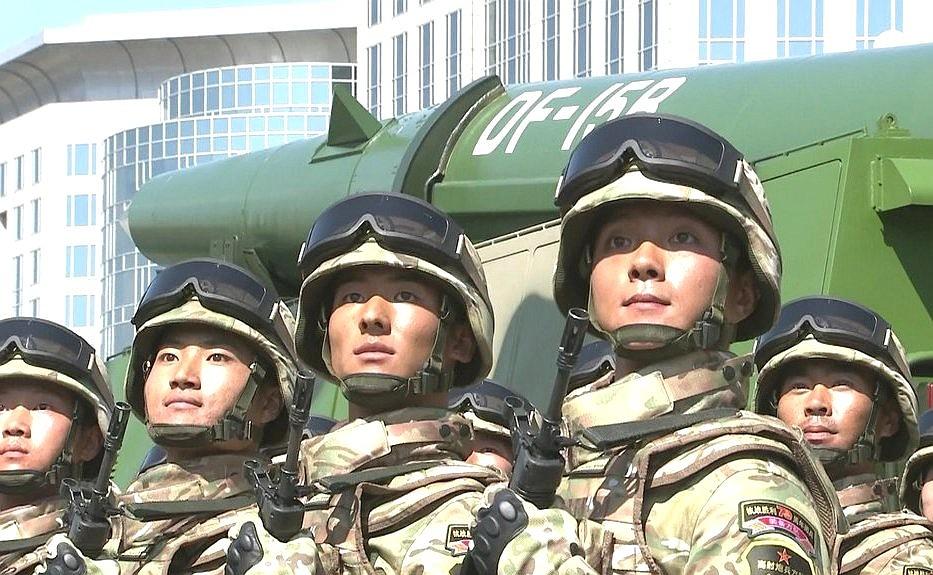
The Pentagon’s 2018 annual report on China’s military power puts into sharp relief the speed and scale of China’s ambitious military modernisation drive. According to the report, the People’s Liberation Army is undergoing the ‘most comprehensive restructuring of forces in its history’ with rapidly improving capabilities that could ‘degrade core US operational and technological advantages’.
This sombre assessment comes in the context of intensifying strategic competition between the US and China, and increasing anxiety about Chinese power around the world.
China’s expanding strategic ambitions and regional and global influence are setting the direction of the PLA’s sweeping modernisation and reform effort. According to the report:
[A]s China’s global footprint and international interests have grown, its military modernization program has become more focused on investments and infrastructure to support a range of missions beyond China’s periphery, including power projection, sea lane security, counterpiracy, peacekeeping, humanitarian assistance/disaster relief (HA/DR), and noncombatant evacuation operations.
To fulfil its evolving and broadening mission, the PLA has abandoned its ‘historically land-centric mentality’ and shifted its priorities towards developing air, naval, missile and information forces.
As a part of that effort, the PLA Army was downsized and reorganised from 18 group armies into 13 renamed group armies. The core operational land force unit was changed from division to brigade to improve flexibility and combat effectiveness.
The PLA Navy, the largest in the world (with more than 300 ships), continues to modernise rapidly. Of particular interest is China’s aim to triple the manpower of the PLA Navy Marine Corps from two brigades and 10,000 troops to seven brigades and 30,000 troops by 2020. This underscores the PLA’s growing amphibious and expeditionary warfare capabilities.
The PLA Air Force is ‘closing the gap with the US Air Force across a spectrum of capabilities, gradually eroding longstanding US technical advantages’. For example, in overwater bomber operations, the PLA Air Force is assessed to be ‘gaining experience in critical maritime regions and likely training for strikes against US and allied targets’.
In addition to naval and air power, the report also highlights the rising profile of the PLA Strategic Support Force, which is responsible for military operations in space, cyberspace and the information domain. Information operations will increase in importance as the PLA works to become a global force in the decades ahead.
Beyond shifting the focus away from land forces, the PLA is actively enhancing its joint operations capabilities. For PLA strategists, this capacity is a force multiplier that sits at the core of combat effectiveness in modern warfare.
In the pursuit of genuine joint operations capabilities, the PLA headquarters have been completely restructured to lay the groundwork for an effective joint command system (as well as to strengthen the supreme Central Military Commission’s control over the entire PLA).
The report identifies three key elements to this restructuring. First, the PLA has replaced the previous seven military regions with five joint theatre commands. PLA exercises and training, including large-scale multi-service exercises, aim to improve the effectiveness of the theatre commands’ joint command capabilities. Moreover, the appointment of the first navy and air force theatre commanders in the southern and central theatres, respectively, signals a strong commitment to joint capabilities.
Second, to facilitate joint force management, an army headquarters was established and the missile branch was elevated to a service co-equal with the army, navy and air force. This is significant because before the current round of reforms, the army headquarters was synonymous with the general staff, which created barriers for shifting away from the PLA’s traditional land-centric mentality.
Third, the PLA has created the Strategic Support Force and the Joint Logistics Support Force to provide centralised and coordinated strategic information and logistical support to PLA operations.
Despite significant reform, the report identifies critical challenges for the PLA’s power projection and joint operations capabilities. Indeed, the PLA’s ‘doctrine, institutional structures and procedures, infrastructure, and platforms to project, support, and sustain forces abroad’ remain relatively underdeveloped.
In addition, to capitalise on joint reforms and realise its joint aspirations, the PLA will need to update and integrate significant numbers of weapon and communication systems.
What does all this mean for the region?
The first and most significant implication of the report’s assessment is that the rapidly modernising PLA will increasingly be capable of projecting power abroad. In the years ahead, we should expect a PLA with an expanded regional and global presence, including in Africa, Southeast Asia, and the Indian and Pacific oceans. China’s opening of its first military base in Djibouti underscores this trend and foreshadows further investment in overseas military bases and infrastructure.
Growing military power will also allow Beijing to better secure its territorial claims in the South and East China seas, and deter Taiwan from moving closer to de jure independence. Beijing’s assertive (and sometimes coercive) postures with respect to the South China Sea and Taiwan highlight its willingness to use, or threaten to use, its growing hard power in advancing China’s core strategic interests.
The report’s findings also underscore the rising cost of US and allied interventions in Asia against China, including in contingencies involving the South China Sea, Taiwan and the Korean peninsula. Specifically, the PLA’s modernising conventional missile and space-based platforms will pose significant challenges to the effectiveness and survivability of US and allied forces and assets in the event of conflict.
And China’s growing integrated deterrence capabilities across multiple domains will increasingly challenge the credibility of US extended deterrence guarantees to its allies in the region.
Overall, the report’s assessment of China’s rapid military modernisation and reform suggest the continuation and possible acceleration of a shift in relative military power towards China. We should pay close attention to the PLA’s expanding regional and international reach as it evolves towards a global force.